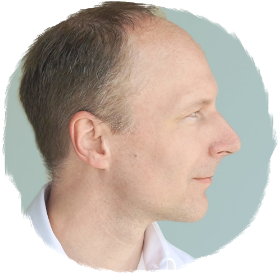So I was watching a couple of dancers on Youtube, a movement exploration lab, and couldn’t help but wonder: Are they mentally present? Or did they wander off and have completely lost themselves in a world of mindless senses?
I sometimes see this in my classes too, especially with new students. Instead of following my teaching, they would wander off into another modus operandi. I would usually not let them fall astray too far, by feeding them with new tasks and challenges which require them to become fully present again and get their components of action together again: thinking, feeling, sensing, moving. Being aware of trajectory, speed and easing, movement initiation, distribution of work, becoming aware of the overall picture, etc.
Years ago, I got advise from a famous Feldenkrais Trainer from Montreal, Canada. He told me that he took coaching sessions which went like this: he would teach a class, and just like in a game of Musical Chairs (also known as Trip to Jerusalem) his coach would say “STOP” from time to time, and ask him: What are you thinking right now? What are you doing right now? What is your strategy? What have you accomplished? What have you failed at? What did you plan to do next? In this way he learned to be fully present and conscious of his every step as a teacher, whenever he choses to be so.
Another time I was studying with a famous Feldenkrais Trainer from New York, and I observed the same thing happening in his classes: students trailing off and loosing themselves in a world of mindless senses. Then he would clap his hands, loudly, “ok ok ok”, sometimes he would even get genuinely upset. But shortly after he would crack a smile again, and ever so compassionately change from ATM to group demo or FI demo or story telling, something that would bring his students back to be fully present again.
Hm, how can I explain this better… Did you ever read a flight of text only to notice that your mind has wandered off and you have no idea what you have just read? You KNOW that you have been reading, especially if you read out loud – but you have been so absorbed by the process of reading that you missed to pay attention to the meaning of the words, or maybe your mind has really wandered off to think about something completely else, while your lips kept moving and your voice kept speaking. Something like this.
The same can happen with movement. I guess that’s what Moshé Feldenkrais meant when he said things like, “Unless one looks for meaning in sensory stimulation, there is none.” or “Learning is turning darkness into light, obtaining something out of nothing, it is creative.” or sometimes he said something like, “The movements themselves are stupid, they have no meaning”.
Lastly for todays writing, I will copy-paste a paragraph from one of the strictly protected texts, a text the International Feldenkrais Guild acquired from Moshé Feldenkrais’s estate, but they never published it to the general public, likely never will. A text the International Feldenkrais Guild sells only to its paying and EULA (End User License Agreement) abiding members. A minute of Moshé Feldenkrais lecturing in Amherst, June 26, 1980:
“For instance, if you think, how did Goethe live? How did Bach live? How did Michelangelo live? How did da Vinci live? How does anybody … how does Einstein live? How does Mohammed Ali live? How do they live? With what do they get busy? What do they do all the day with themselves? Well, to achieve that quality of ability of mobilization that they have, that way of acting that these people have, they pass a lifetime doing what we do now, trying to concretize ideas that come to their mind. If you want to be a Picasso, which is not necessary because since Picasso there are already and before him and afterwards there will be better and worse painters and it doesn’t really matter if you are like Morot or like David or like Rembrandt and not like Picasso. Doesn’t matter. There is room for everyone to become himself, like these people became. You see they are so characteristic that whatever they did, they did it in that peculiar way which is feasible only to an individual who feels himself, has an aesthetic feeling that fits his own make-up and his own way of doing and his way of doing takes him years. Picasso, took him thirty, forty years before he worked out his own way of doing in such a way that the right eye could be on the ass. See, that’s a very clever way of doing it, but he did not do it at the beginning. So, this is not work. But this is what you call creative work, what we did this morning. And that, of course, doesn’t mean work. And the people I mentioned, none of them worked. They enjoyed themselves all their life, doing more work than any one of us does, without going to the pictures. They did. They did everything. And Picasso and Michelangelo and da Vinci and Bach, if you only see what they left after themselves, you could think that our life would not be sufficient because we are unable to produce so much work today as they did. But to them it wasn’t work; it was living.”


